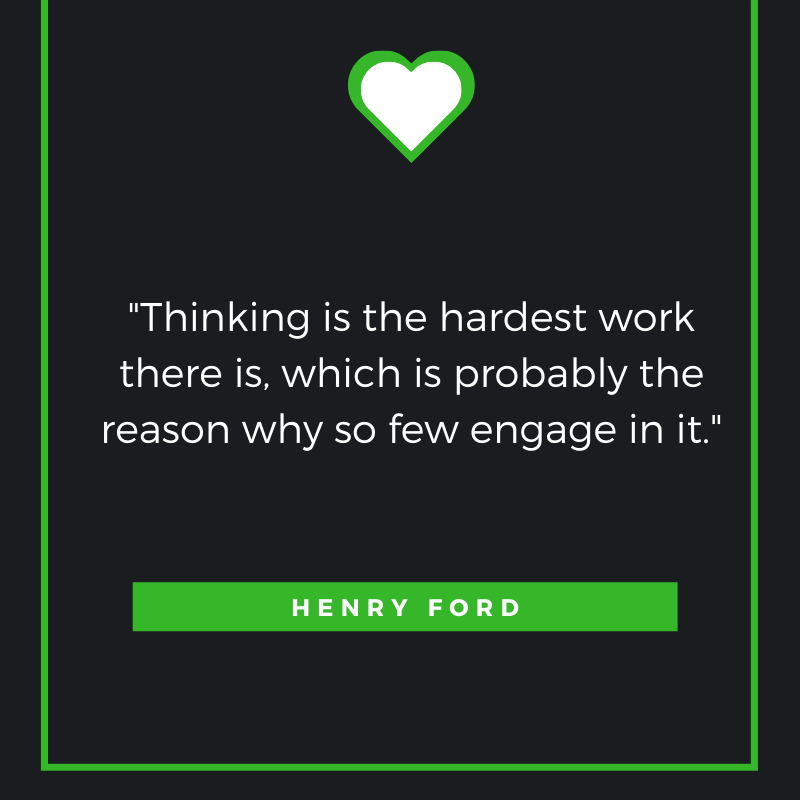
How often do you allocate time to thinking?
Of course, I know you’re always thinking, but much of what you consider to be thinking can be chalked up to pattern recognition and reacting.
As magnificent as it is, your brain is a very lazy organ and is continuously looking for ways to conserve energy. Its goal is long-term survival, and so it creates shortcuts and automates as many tasks as possible. These shortcuts lure you into thinking you’re thinking when what you’re really doing is utilizing preset patterns.
Deep thinking is hard work, and rarely is it taught in any school curriculum. In fact, in most educational programs, quick answers and responses are rewarded, and slow thinkers are often punished or penalized for their slowness. Walk into any classroom, and you’ll see children raising their hands as fast as possible to be recognized and called on by the teacher, and this behavior continues into adulthood.
But as we all know, having an answer to a question is not the same as thinking. While rote memorization has its place, learning to think is very different.
So, how do you learn to think?
Thinking is all about exploring different ideas and options. It’s about spending time evaluating outcomes based on actions. It’s about reaching the end of the line of your current patterns so that you can build new ones. Thinking involves dancing with boredom until a new idea or thought emerges.
One of the best ways to think is with a pen and notebook. Title the page with an idea or topic you want to think about, and then let your mind wander. Jot down any and every thought that comes to mind. When you do this, you’ll quickly find that you bump up against a mental wall where you’ll feel as though you’ve exhausted all your options – this is the point where real thinking begins.
Of course, you don’t need to engage in writing every time you want or need to think, but every so often, when you have a big decision to make or need to work through a challenge, learning to think out loud aka, on paper can help you see options and bring new opportunities to light.
So, get in the habit today of thinking on paper. Carve out a few minutes to practice and continue to hone your ability to think. While it’s unfortunate that thinking is rarely taught as a class, fortunately for you, learning to think is a skill that you can learn to cultivate at any time in life.
P.S. Thanks for reading! If you enjoyed it, please share it with one person you love.